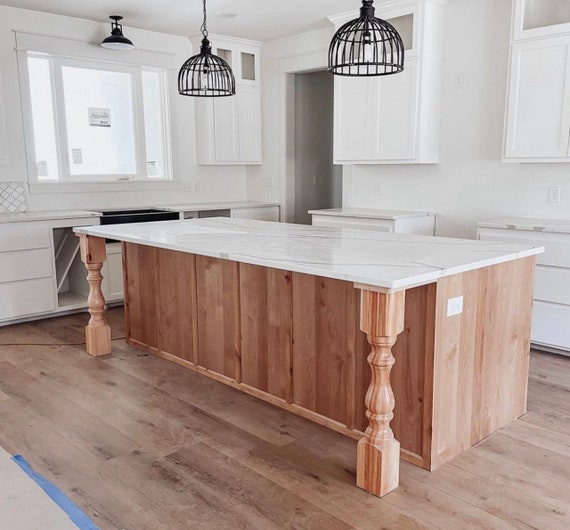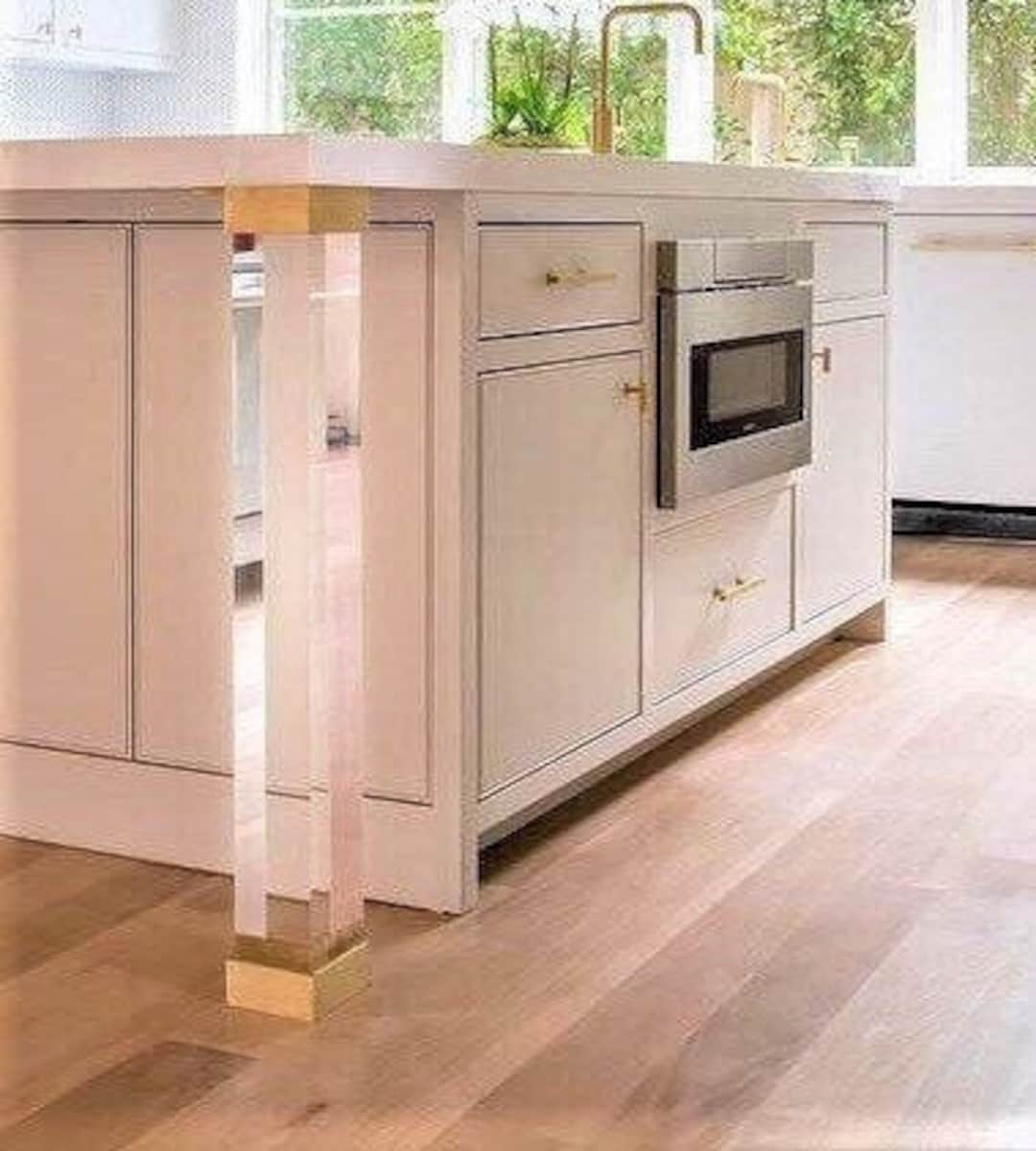Count On Expert Workmanship for Tailored Legs For Kitchen Island Concepts
Count On Expert Workmanship for Tailored Legs For Kitchen Island Concepts
Blog Article
Necessary Variables to Think About When Choosing Legs For Cooking Area Island
Choosing the ideal legs for a kitchen area island involves a careful assessment of several variables that can dramatically influence both performance and visual charm. Among these, the choice of product plays a critical duty in ensuring resilience, while the style should enhance the existing decor. Additionally, factors to consider such as elevation and weight assistance are crucial for stability and comfort. As we check out these components, it comes to be clear that each decision can have far-ranging implications for the overall cooking area experience. What nuances should be thought about in each of these groups to achieve the ideal balance?
Material Options
When choosing legs for a kitchen area island, comprehending the different product options is essential for attaining both visual appeal and architectural stability (Legs For Kitchen Island). The choice of product substantially influences not only the durability of the island but likewise its general design and functionality
Timber is a popular selection, using heat and adaptability. Solid hardwoods, such as oak or maple, offer stamina and can be stained or repainted to match the kitchen area decoration. Metal legs, often made from stainless steel or wrought iron, add a commercial and modern-day feel while guaranteeing toughness and stability. These materials are resistant to put on and can support significant weight, making them excellent for larger islands.
An additional option is engineered products, like MDF or plywood, which can be extra affordable while still using a variety of coatings. Nonetheless, they may not supply the exact same degree of stability as strong wood or steel. Products such as acrylic or glass can create a contemporary look, though they might require extra support to make sure stability.
Ultimately, the option of material for cooking area island legs should align with the preferred functionality and the overall style of the kitchen.
Design And Style

When thinking about design, the form and finish of the legs are critical. Conical legs can provide a sense of agility and style, while thicker, much more robust legs can communicate toughness and stability. Furthermore, the surface-- be it repainted, tarnished, or natural-- ought to enhance the cabinets and counter top materials to create a unified look.
Additionally, the layout of the legs can likewise reflect personal taste. Custom-made or attractive legs, such as those featuring elaborate makings or one-of-a-kind geometric forms, can work as focal factors, including character and character to the kitchen area. Eventually, the appropriate selection will certainly not just enhance performance yet also raise the aesthetic appeal, making the kitchen area island a standout feature of the home.
Height Considerations
Choosing the ideal height for cooking area island legs is critical, as it directly affects both capability and convenience. The standard elevation for a cooking area island normally ranges from 36 to 42 inches, aligning with typical kitchen counter heights. A 36-inch elevation is suitable for cooking and food preparation, allowing for comfy use of kitchen devices and devices. Conversely, an elevation of 42 inches is commonly favored for islands intended for bar seating, fitting taller feceses and offering a laid-back eating experience.

It is also crucial to account for users' elevations and choices. Tailoring the elevation can make certain a comfy experience for all member of the family, making the kitchen island a more practical and satisfying space.
Weight Assistance
Guaranteeing sufficient weight assistance for kitchen area island legs is vital for both safety and security and capability. The kitchen area island frequently offers several objectives, including cooking, eating, and additional storage space, demanding a durable assistance framework. When choosing legs, it is crucial to consider the total weight ability called for based upon the island's intended use and the products that will certainly be placed on it.
The option of material for the legs plays a substantial role in their weight-bearing abilities. Strong timber, steel, and sturdy composites normally provide exceptional toughness contrasted to lighter materials. Furthermore, the layout of the legs-- whether they are straight, tapered, or have a pedestal type-- can influence their capacity to disperse weight effectively across the framework.
Moreover, the leg placement ought to be purposefully intended to boost security. Legs placed at the corners or with a larger base can better support larger tons. Always consult the producer's specifications regarding tons limitations to guarantee that the legs can sustain the intended weight without endangering safety. In summary, selecting cooking area island legs with ample weight assistance is necessary for producing a risk-free and functional culinary room.
Installment and Upkeep
Appropriate setup and upkeep of cooking area island legs are vital for making certain long life and security. To start, it is important to follow the producer's guidelines during installation. This often involves safeguarding the legs to the space station utilizing suitable fasteners, ensuring that official statement the legs are degree and aligned. Utilizing a degree device can aid prevent wobbling and boost the total visual appeal of the kitchen island.
When installed, routine maintenance is essential to protect the stability and appearance of the legs - Legs For Kitchen Island. For wood legs, regular cleaning with a wet cloth and application of ideal wood gloss can prevent moisture damage and preserve their surface. Steel legs may require a gentle cleaning remedy to remove oil and grime, complied with by a dry cloth to avoid rust formation
Furthermore, evaluate the legs frequently for indicators of wear or damages, such as splits or loose joints. Tightening up screws or screws as needed can likewise extend the life-span of the legs. By adhering to these installment and maintenance methods, property owners can make sure that their kitchen island stays strong and visually appealing for years to come.
Final Thought

Aesthetic comprehensibility is critical in selecting the style and style of legs for a kitchen area island, as these aspects substantially affect the overall ambiance of the room. Conical legs can offer a feeling of agility and elegance, while thicker, extra robust legs can communicate toughness and stability.Selecting the ideal height for cooking area island legs is vital, as it straight affects both functionality and comfort. In summary, picking kitchen area island legs with adequate weight assistance is vital for producing a practical and secure cooking room.
In conclusion, selecting legs for a kitchen area island necessitates cautious factor to consider of numerous aspects, consisting of material alternatives, style, height, weight support, and installment.
Report this page